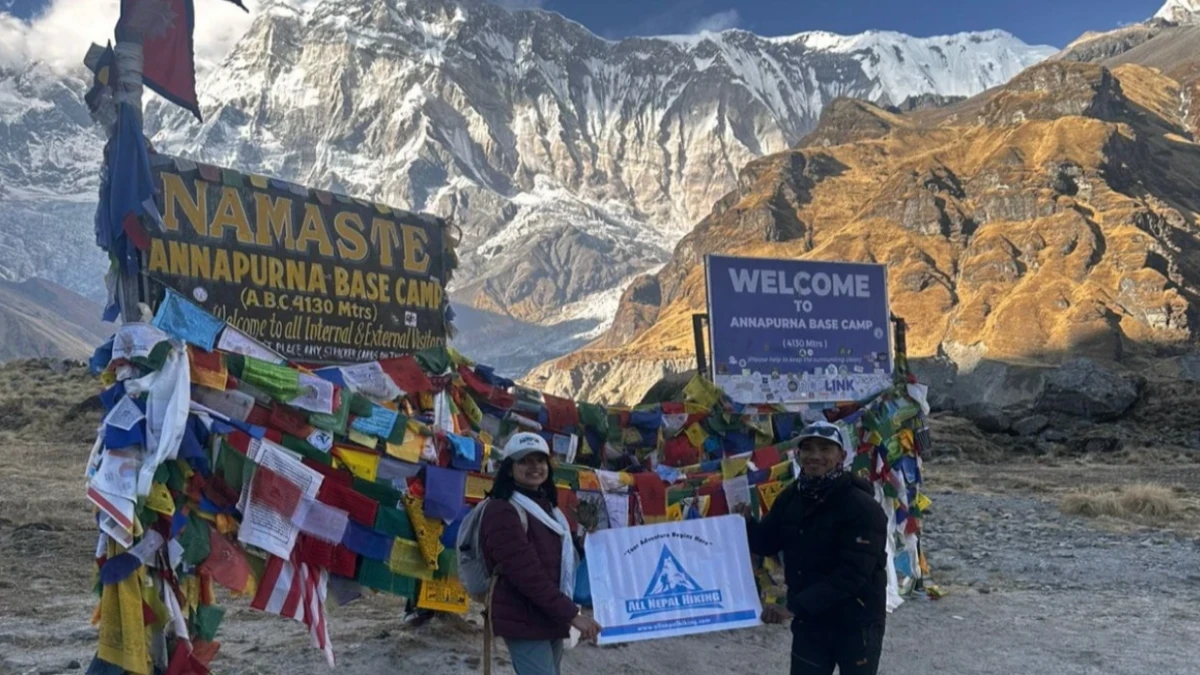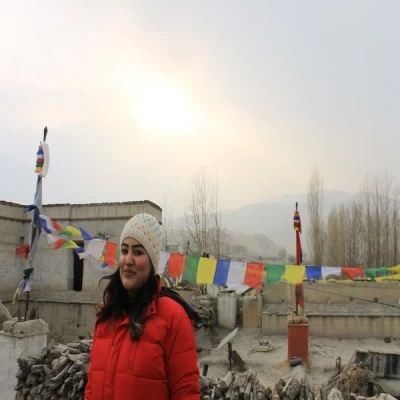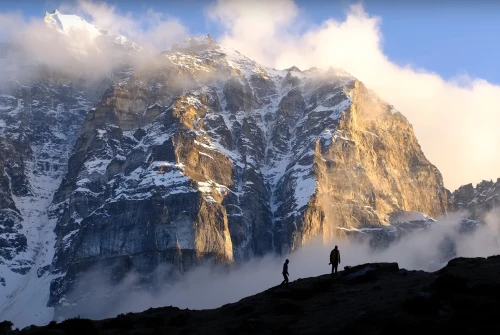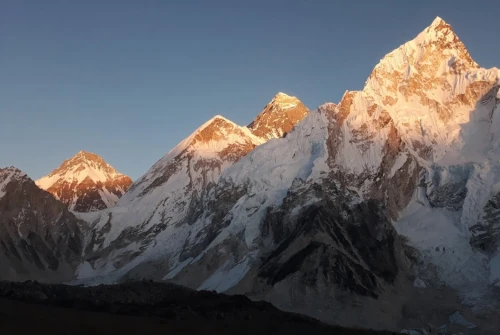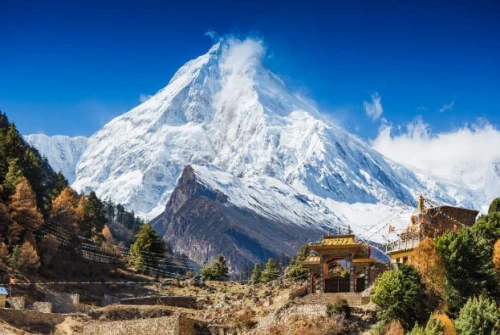Setting out on the Annapurna Circuit as a solo female traveler is more than just a trek; it’s a journey of self-discovery, empowerment, and connection with the natural world. The circuit winds through lush valleys, terraced farmlands, ancient villages, and across the dramatic Thorong La Pass, one of the highest trekking passes in the world. Walking this trail alone may sound intimidating at first, but the reality is that it offers safety, support, and countless opportunities to grow stronger with every step.
Unlike many other treks, the Annapurna Circuit trek is well-established and supportive for solo trekkers. Tea houses provide not only food and shelter but also warmth, friendliness, and a sense of community that helps solo women feel welcome. The trail itself is busy during peak seasons, filled with fellow trekkers from around the globe, meaning you’ll never truly feel alone unless you want to. For many women, this balance between independence and companionship makes the Annapurna Circuit the perfect trek.
But beyond the physical path, the Annapurna Circuit offers something much deeper; it invites us to step outside our comfort zone, embrace challenges, and discover the incredible resilience within. Every village, every prayer flag, and every mountain view adds to a journey that stays with us long after we’ve returned home. And as you prepare for this adventure, know that all of us in Nepal hiking communities would love to support you further, whether it’s planning logistics, choosing safe lodges, or simply sharing encouragement.
Why the Annapurna Circuit is Perfect for Solo Female Travelers
The Annapurna Circuit is one of the few treks in the world where solo female travelers can feel both independent and supported. Unlike remote expeditions where you may go days without seeing another person, this trail is lined with small villages, tea houses, and welcoming locals. This means you can trek with confidence, knowing that safety, food, and shelter are always within reach.
Another reason this trek is perfect is the variety it offers. One day, you might walk through rice paddies and subtropical forests; the next, you’ll find yourself among rugged cliffs or snow-capped peaks. For a solo traveler, this constant change keeps the journey engaging and inspiring. The diversity of landscapes mirrors the inner journey, each step a reminder of growth, strength, and adaptation.
Perhaps the most empowering aspect of this trek for women is the community on the trail. You’ll meet trekkers from across the world, many of whom are also traveling alone. Sharing meals, joining conversations in tea houses, or even walking sections together provides companionship when you need it, without taking away the independence of your solo adventure. It’s the perfect balance between solitude and connection, making the Annapurna Circuit an unforgettable experience for any solo female traveler.
Safety on the Trail: What You Need to Know
When traveling alone, safety is often the biggest concern, especially for women. The good news is that the Annapurna Circuit is one of the safest trekking routes in Nepal. The communities along the trail have been hosting trekkers for decades, and they understand the needs of foreign travelers very well. Crime is extremely rare, and most solo female trekkers report feeling respected and welcomed rather than singled out.
That said, there are still important practical safety measures we should take. Always avoid walking in complete darkness, whether in the early morning or after sunset, as trails can be confusing, and it’s best to stick with the natural rhythm of daylight. Choosing tea houses that have other trekkers staying in them can also bring extra peace of mind. Trusting your instincts is key; if something doesn’t feel right, whether it’s a person or a place, don’t hesitate to move along.
Another important part of safety is altitude awareness. The Thorong La Pass at 5,416 meters is the highest point of the trek, and altitude sickness can affect anyone. Going slow, acclimatizing properly, and staying hydrated are your best defenses. As a solo trekker, keeping in touch with family or friends through a local SIM card or even a GPS device adds another layer of reassurance. In truth, the combination of supportive locals, fellow trekkers, and smart precautions makes the Annapurna Circuit a safe and empowering choice for women traveling alone.
Best Time to Trek the Annapurna Circuit Alone
One of the most important decisions you’ll make as a solo female trekker is when to go. The Annapurna Circuit changes dramatically with the seasons, and your experience will be shaped by the timing of your journey.
The autumn season (September to November) is the most popular for good reason. The skies are crisp and clear, offering breathtaking views of Annapurna, Dhaulagiri, and countless snow-capped peaks. The weather is stable, and the trail is full of life, which means you’ll never feel isolated. For solo travelers, this busy yet friendly atmosphere often feels reassuring you can find company when you wish, but also enjoy your own space.
The spring season (March to May) is another wonderful time to trek. The hills are painted with blooming rhododendrons, and the days are pleasantly warm, though nights at higher altitudes remain cold. Spring tends to feel more colorful and vibrant, with trails buzzing with birdsong and wildflowers. This season also brings plenty of trekkers, so solo women can feel comfortably part of a larger community on the trail.
Winter (December to February) and monsoon (June to August) are less ideal. Winter brings snow and extreme cold at high passes, which can make Thorong La impassable. Monsoon season brings heavy rain, slippery trails, and leeches in lower regions. For solo trekkers, these seasons can feel too quiet and potentially unsafe due to the reduced number of people on the trail. Sticking to spring or autumn ensures not only the best trekking conditions but also a supportive community that makes traveling alone more enjoyable and secure.
Accommodation and Food: Tea House Life as a Solo Woman
One of the most comforting aspects of the Annapurna Circuit is the network of tea houses, family-run lodges scattered across the trail. For a solo female traveler, tea houses are not just about food and a place to sleep; they are about safety, warmth, and belonging. Every evening, you’ll find yourself welcomed into a cozy dining hall, where trekkers gather around a wood stove, sharing stories from the day. As a woman traveling alone, you’ll likely find both the lodge owners and fellow trekkers looking out for you in subtle but genuine ways.
Rooms in tea houses are simple, often with two single beds, blankets, and sometimes shared bathrooms. While modest, they are safe and functional. In busier villages, you’ll have a choice of lodges—when in doubt, choose the one where other trekkers are staying, as it provides both companionship and an extra layer of security. Hosts are incredibly caring; many female travelers mention how lodge owners would make sure they were comfortable, offering extra blankets or a hot tea when the nights got cold.
Food in tea houses is another delightful part of the journey. You’ll find menus with surprising variety, from comforting Nepali Dal Bhat (lentils, rice, and vegetables) to noodles, pancakes, soups, and even pasta. As a solo traveler, mealtimes can become opportunities for connection. Sitting at long wooden tables, you’ll naturally strike up conversations with other trekkers, sometimes even making temporary trail companions. Eating together creates a sense of community, something especially reassuring when you’re trekking alone. For women, the tea houses are like little sanctuaries along the trail: safe, nourishing, and filled with warmth.
Cultural Encounters and Local Friendships
Beyond the mountains and landscapes, what makes the Annapurna Circuit so special is its rich cultural diversity. As you walk from village to village, you’ll encounter Gurung, Thakali, and Tibetan-influenced communities, each with its traditions, architecture, and food. For a solo female traveler, these encounters can be deeply meaningful; you’re not just passing through but also being invited into a way of life that has thrived in these mountains for centuries.
In Manang, you might find yourself wandering through stone-paved alleys where locals dry herbs on rooftops. In Marpha, famous for its apple orchards, you could be offered a taste of homemade apple brandy or pie. Higher up, near Thorong La, Buddhist prayer flags flutter in the wind, and you’ll hear the rhythmic chants of monks in small monasteries. These moments of cultural immersion often happen naturally, simply because you’re traveling alone and people feel more comfortable approaching you.
As a solo traveler, you may be surprised by how quickly strangers become friends. Locals often invite trekkers in for tea, and children run to greet you with laughter and curiosity. There’s a unique openness that comes with traveling solo, without a companion to distract you; you connect more deeply with the people around you. This cultural exchange becomes a powerful part of the trek, reminding us that while we came for the mountains, it is often the people who leave the deepest imprint on our hearts.
Challenges You May Face and How to Overcome Them
Every trek comes with challenges, and facing them alone can feel intimidating at first. But these very challenges are also what make the Annapurna Circuit such a transformative experience for solo female travelers.
The first and most common challenge is altitude. As you climb higher, especially approaching Thorong La Pass at 5,416 meters, thinner air can make breathing difficult and cause headaches, nausea, or fatigue. The best way to overcome this is with patience. Going slowly, staying hydrated, and taking acclimatization days in places like Manang will help your body adjust naturally. Solo trekkers should avoid pushing themselves to keep up with groups—it’s your journey, and your pace matters most.
Another challenge is physical endurance. Long trekking days, uneven terrain, and sometimes extreme weather can test your stamina. But the beauty is that the trail is filled with people who’ve never done anything like this before, yet they succeed step by step. For women trekking alone, listening to your body and resting when needed is essential. The circuit isn’t a race, it’s a pilgrimage of sorts, and every step counts.
Lastly, some days may bring feelings of loneliness. Walking through quiet valleys with no one around can feel isolating. Yet, these are also the moments where you find strength in your own company. When you do crave companionship, simply stepping into a tea house or sharing a meal with fellow trekkers usually turns strangers into friends. Challenges will arise, but with each one you overcome, you’ll return home with not only memories but also newfound confidence and resilience.
Essential Packing and Gear Tips for Solo Female Trekkers
Packing for the Annapurna Circuit can feel overwhelming, especially when traveling alone. But the truth is: you don’t need as much as you think, you just need the right essentials. Traveling light gives you more freedom, and it’s easier on your back during long days of walking.
Start with clothing that can be layered. The weather changes dramatically on this trek, from hot, humid valleys to freezing winds at high altitudes. A moisture-wicking base layer, a warm fleece, and a down jacket will cover most needs. Waterproof outerwear is important for rain or snow. Don’t forget comfortable trekking pants and thermal underlayers for cold nights. Good quality trekking boots, already broken in, are the most critical item you’ll carry. Pair them with warm, moisture-wicking socks to avoid blisters.
For gear, a sleeping bag rated for -10°C is highly recommended since tea house blankets are not always enough at higher altitudes. A headlamp, reusable water bottle with purification tablets or a filter, and a basic first aid kit are must-haves. As a solo female traveler, you may also feel more comfortable carrying a small lock for your room in tea houses, plus a power bank since charging often costs extra.
Other thoughtful additions include a lightweight scarf or shawl for modesty when visiting monasteries, trekking poles for steep climbs, and a journal to capture the emotions of your journey. By packing smart and light, you’ll not only feel more confident but also freer to embrace the experience fully, knowing you have everything you need without being weighed down.
How to Stay Connected and Confident on the Trail
One of the biggest concerns for any solo traveler is staying connected, both for safety and for peace of mind. Fortunately, the Annapurna Circuit is well-prepared for this. In most villages, you’ll find access to Wi-Fi (often for a small fee), but it can be unreliable in higher regions. A more reliable option is buying a Nepali SIM card (Ncell or NTC) before starting your trek. With a data plan, you’ll be able to message loved ones, check maps, and even share your progress with friends back home.
Confidence, however, doesn’t come from technology alone; it comes from trusting yourself and your journey. At the beginning, you may feel nervous about navigating alone, but you’ll soon realize that the trail is well-marked and that help is always nearby. The more steps you take, the more your self-belief grows. Every day you manage on your own, finding your way, choosing your lodge, connecting with locals—you’re proving to yourself just how capable you are.
Sometimes confidence also comes from preparation. Knowing what to expect, carrying the right gear, and planning your route gives you a sense of control. And remember, the community of trekkers on the trail is one of the most supportive you’ll ever meet. You’re never truly alone, even if you’re trekking solo. With every sunrise in the Himalayas, your confidence will grow stronger, making this journey not just an adventure but a personal transformation.
The Empowering Side of Trekking Alone as a Woman
There’s something profoundly powerful about standing at Thorong La Pass, prayer flags fluttering around you, snow-capped peaks stretching endlessly in every direction, and knowing you reached this point on your own. For women, trekking the Annapurna Circuit solo is not just a physical accomplishment; it’s a declaration of independence and strength.
Walking day after day with only your determination to guide you teaches lessons no book or classroom ever could. You learn how strong your body truly is, how resilient your mind can be, and how much courage you hold inside. Every challenge faced, whether it’s crossing a suspension bridge alone, braving the cold, or overcoming fatigue, becomes proof that you are stronger than you ever imagined.
However, the empowerment isn’t limited to physical achievement. It’s also in the connections you make along the way. Sharing laughter with strangers at a tea house, exchanging stories with other solo women on the trail, or being warmly welcomed by a Nepali family, all of these moments remind you that the world is not as intimidating as it sometimes seems. By the end of the trek, you don’t just return with stunning photographs, you return with a deeper trust in yourself and a renewed sense of freedom.
Final Advice from Nepal Hiking Communities
Every solo journey is unique, but when it comes to trekking the Annapurna Circuit, there’s a shared wisdom that comes from the generations of hikers, guides, and locals who know these trails intimately. As part of the All Nepal hiking family, we want you to feel that we’re walking beside you, even if your steps are solo. Our first piece of advice is simple: listen to your body. No summit, no pass, and no schedule is more important than your well-being. Go slow, rest when needed, and let the mountains set the rhythm. The Himalayas aren’t a place to rush; they are a place to breathe deeply and embrace each moment.
Second, remember that kindness is everywhere on the trail. Whether it’s a lodge owner offering you extra blankets, a fellow trekker sharing snacks, or a stranger pointing the way when you feel uncertain, these acts of warmth will remind you that you’re never truly alone. Accept help when it’s offered, and don’t hesitate to ask for it when you need it.
Lastly, trust that you belong here. Many women hesitate before setting off alone, worried that it might be unsafe, too difficult, or too lonely. But once you take the first steps, you’ll find that the Annapurna Circuit has a way of embracing solo travelers—guiding you through challenges, celebrating your victories, and filling your heart with memories that last forever. And remember, all of us in Nepal hiking communities would love to help you further, whether it’s sharing advice, planning your route, or just encouraging you as you prepare for your journey.
Conclusion
Trekking the Annapurna Circuit as a solo female traveler is more than just an adventure through mountains; it’s a personal pilgrimage of courage, strength, and discovery. The landscapes will leave you breathless, the cultural encounters will open your heart, and the challenges will transform the way you see yourself. You’ll arrive as a traveler, but leave as someone who knows her resilience and independence in ways you never imagined.
Yes, there will be moments of struggle, steep climbs, cold nights, or a pang of loneliness, but each challenge only makes the victory sweeter. When you stand atop Thorong La Pass with the Himalayas spread around you, you’ll know without doubt that this journey was worth every step. And as you take the path back down, carrying the lessons of the mountains in your heart, remember that you were never truly alone. The Annapurna Circuit, the locals, the fellow trekkers, and even the whispers of the mountains themselves walk beside you. And for every woman dreaming of taking this journey, know that you, too, are capable, and we, the hiking community of Nepal, are here to support and encourage you every step of the way.
Just like Annapurna, many tales are highly recommended for solo female travelers. You can check out the Nepal for solo female travellers blog for further information.
